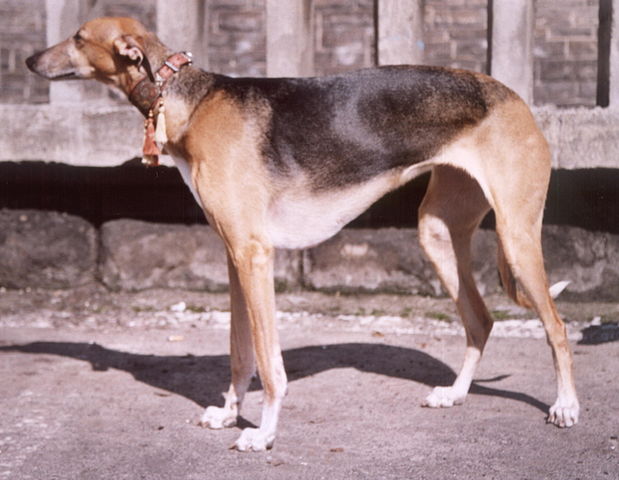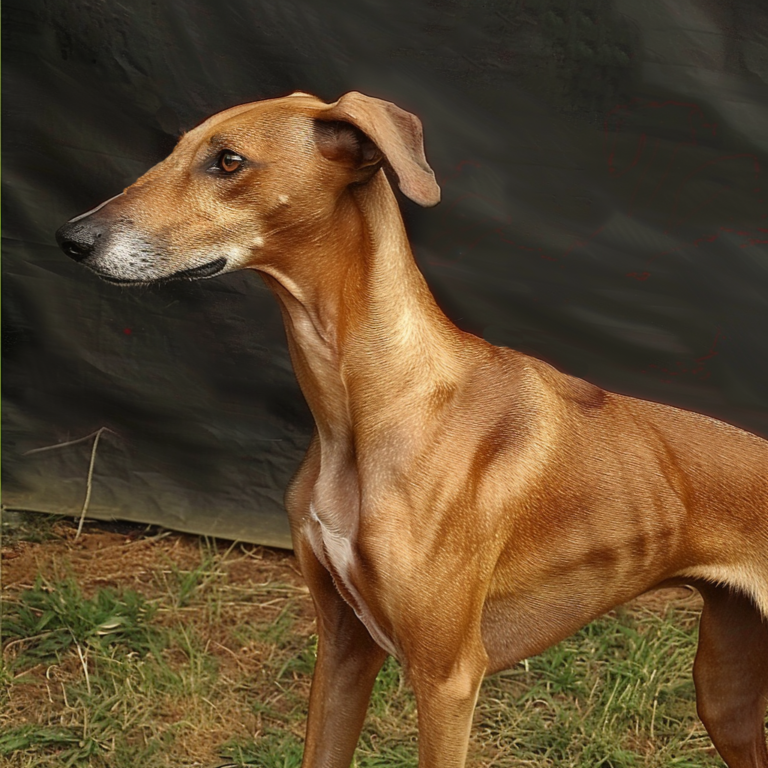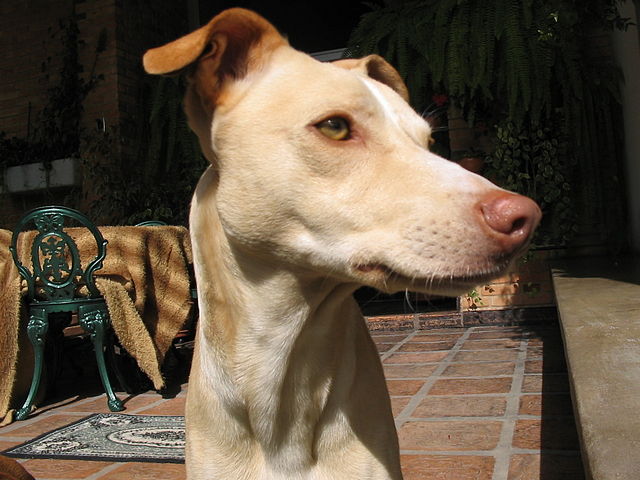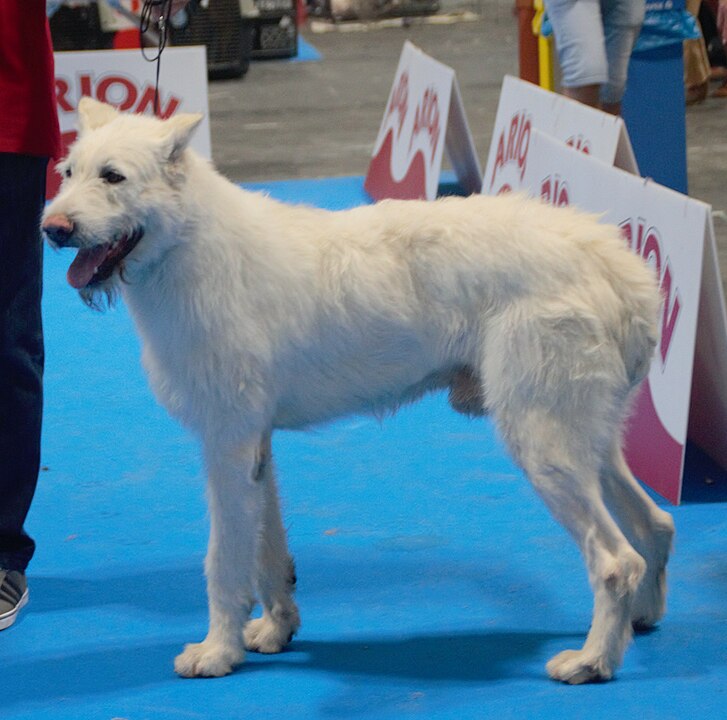The Polish Greyhound, also known as the Chart Polski, is in the sighthound family. This is an ancient breed, possibly dating as far back as the twelfth century, and was a favored breed of Polish nobility. Their original purpose was to hunt primarily hare, deer, fox and birds although some were even used to hunt wolves! Unfortunately, shortly after World War two their numbers began to fall drastically however today they maintain a steady (albeit still small) following. They have been recognized by the FCI since 1989, and the UKC has more recently followed suit however they are extremely rare in the United States.
The Polish Greyhound’s smooth hard coat comes in a rainbow of colors. Although very short, it is a double coat which will grow thicker in colder temperatures, unlike the single coat of the more-familiar Greyhound. Another difference is the slightly longer brush of hair on the tail and “culottes” on the thighs. This sighthound is a show-stopper in terms of beauty – in addition to the multitude of allowable colors, the breed stands out for it’s giant size and slender body composition. While he is a bit more robust than other sighthounds, he is still considered thin when compared to “the average dog”.
Polish Greyhounds are very active yet polite and dignified in the home. They do require plenty of exercise to stay fulfilled and keep out of trouble, however! A daily jog is definitely needed, supplemented with free running time. As might be imagined this is a very fast dog with quick reflexes and ample agility – so any off-leash exercise should be limited to areas that are safely fenced! They do best with individuals or families that are somewhat more active, and ideally have a house with a large fenced yard to run in. Without enough physical stuff to do, they can develop behavior problems.
The Polish Greyhound can get along well with kids although it is always recommended to supervise interactions with younger kids (primarily to make sure the children are fair to the dog). This is a loyal family dog with a courageous streak who can become protective under the right circumstances. Aloof towards strangers and occasionally snippy towards other dogs, they prefer homes in which they can be the only dog in the household. Generally the breed is very even-tempered and trusting of his owner, but more suspicious of strange people.
It is recommended that owners of Polish Greyhounds have some dog ownership experience under their belt before acquiring a member of this breed. This is partially due to their territorial natures and protective instincts – a contrasting difference from many other sighthound breeds. Furthermore they can be more challenging with other members of their species. Early and frequent socialization with other dogs may help but ultimately the dog’s individual bloodline will play a large part in how tolerant each individual is.
The Polish Greyhound can be difficult to train, despite being an intelligent dog. This is because he was bred to hunt independently and think for himself rather than work with people. His high prey drive also means that he might never be 100% reliable when certain distractions are present (rabbits or other prey animals within his eyesight). With training, consistency is key as well as making the rules easy to understand.
Polish Greyhounds tend to be pretty healthy for the most part, although cardiomyopathy tends to run in the breed. Some lines are also more likely to bloat (a condition that seems to have both genetic as well as environmental factors). If looking to acquire a puppy, make sure to do your research and choose a responsible breeder who health tests and can tell you about the particular genetics in their lines. Average lifespan is fairly high for this giant breed, 13-15 years is not uncommon.




